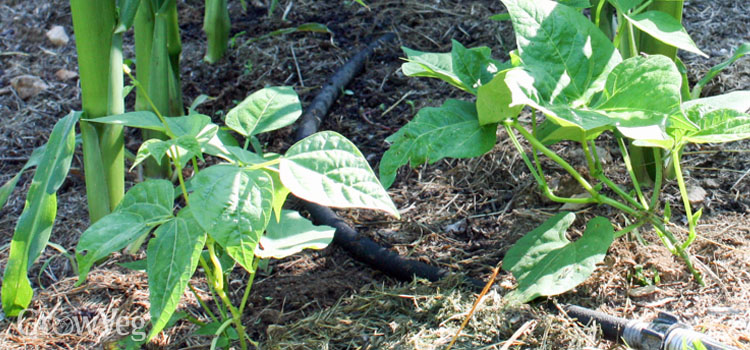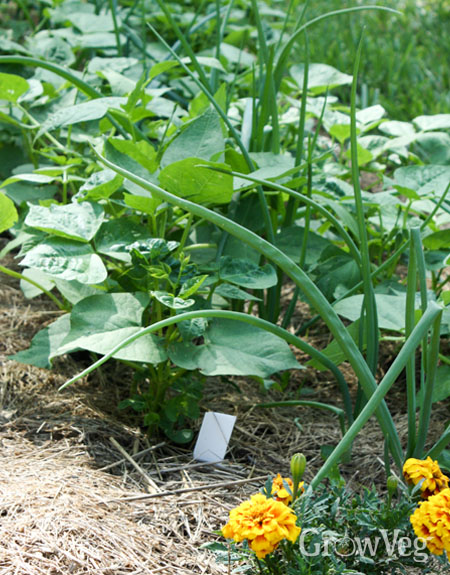The Ultimate Guide To Lima Bean Companion Planting
The Ultimate Guide to Lima Bean Companion Planting
Lima beans are a delicious and nutritious legume that can be grown in many different climates. They are also a great choice for companion planting, as they can help to improve the health of your garden and attract beneficial insects.
In this guide, we will discuss the benefits of companion planting with lima beans, as well as some of the best plants to grow alongside them. We will also provide some tips on how to create a successful companion planting scheme.
Benefits of Companion Planting with Lima Beans
There are many benefits to companion planting with lima beans. Some of the most important benefits include:
- Improved soil health: Lima beans are nitrogen-fixing plants, which means that they can help to improve the nitrogen content of your soil. This can benefit the growth of all of the plants in your garden.
- Attraction of beneficial insects: Lima beans attract beneficial insects, such as ladybugs and lacewings, which can help to control pests.
- Disease suppression: Some companion plants can help to suppress diseases that can affect lima beans. For example, nasturtiums can help to suppress root knot nematodes.
- Increased yields: Companion planting can help to increase the yields of lima beans. For example, corn can help to support lima bean vines, which can lead to increased yields.
Best Plants to Grow with Lima Beans
There are many different plants that can be grown alongside lima beans. Some of the best companion plants for lima beans include:
- Corn: Corn can provide support for lima bean vines, and it can also help to attract beneficial insects.
- Cucumbers: Cucumbers and lima beans can be planted together in a trellis system. This can help to maximize the space in your garden and increase yields.
- Potatoes: Potatoes and lima beans can be planted together because they have different nutrient requirements. This can help to prevent the depletion of nutrients in the soil.
- Sunflowers: Sunflowers can help to attract beneficial insects, and they can also provide shade for lima bean plants.
- Nasturtiums: Nasturtiums can help to suppress root knot nematodes, and they can also attract beneficial insects.
Tips for Companion Planting with Lima Beans
When companion planting with lima beans, there are a few things to keep in mind:
- Choose plants with complementary growing habits: Some plants, such as corn, can provide support for lima bean vines. Other plants, such as cucumbers, can be planted in the same trellis system as lima beans.
- Consider the nutrient requirements of the plants: Some plants, such as potatoes, have different nutrient requirements than lima beans. This can help to prevent the depletion of nutrients in the soil.
- Plant the companion plants at the same time: This will help to ensure that the plants have a similar growth rate.
- Water and fertilize the plants evenly: This will help to ensure that all of the plants in your garden are getting the nutrients they need.
Conclusion
Companion planting with lima beans can be a great way to improve the health of your garden and increase yields. By following the tips in this guide, you can create a successful companion planting scheme that will benefit all of the plants in your garden.
Lima beans are a delicious and nutritious legume that can be grown in most gardens. But did you know that there are certain plants that can help to improve the growth and productivity of lima beans? These are known as companion plants, and they can help to attract beneficial insects, deter pests, and improve the overall health of the soil.
Some of the best companion plants for lima beans include:
- Corn: Corn provides shade for lima beans, which can help to protect them from the hot sun.
- Cucumbers: Cucumbers help to attract beneficial insects, such as ladybugs, which can help to control pests.
- Marigolds: Marigolds help to deter pests, such as Mexican bean beetles.
- Nasturtiums: Nasturtiums help to attract beneficial insects, such as ladybugs and lacewings.
- Potatoes: Potatoes help to repel Mexican bean beetles.
If you're looking to improve the growth and productivity of your lima beans, I recommend considering companion planting. There are many different plants that can be paired with lima beans, so you're sure to find some that work well in your garden.
For more information about lima bean companion plants, please visit Gardenia Inspiration.
FAQ of lima bean companion plants
- What are some good companion plants for lima beans?
Lima beans are a nitrogen-fixing legume, so they can help to improve the soil for other plants. Some good companion plants for lima beans include corn, tomatoes, peppers, and cucumbers. These plants can help to deter pests and diseases, and they can also benefit from the nitrogen that the lima beans produce.
- What are some bad companion plants for lima beans?
Some plants that should not be planted near lima beans include beets, kohlrabi, and onions. These plants can compete with the lima beans for nutrients, and they can also be susceptible to the same pests and diseases.
- How do lima bean companion plants help each other?
There are a few ways that lima bean companion plants can help each other. For example, corn can provide shade for lima beans, which can help to protect them from pests and diseases. Tomatoes can attract beneficial insects that help to control pests, and cucumbers can help to improve the drainage around lima beans.
- How do I choose the right companion plants for my lima beans?
When choosing companion plants for lima beans, it is important to consider the following factors:
* The growth habit of the plants. Some plants, such as corn, can provide shade for lima beans, while others, such as cucumbers, can help to improve drainage.
* The nutrient needs of the plants. Lima beans are nitrogen-fixing legumes, so they do not need a lot of nitrogen fertilizer. However, they can benefit from the presence of other plants that can provide them with other nutrients.
* The susceptibility of the plants to pests and diseases. Some plants, such as tomatoes, can attract beneficial insects that help to control pests. Other plants, such as beets, can be susceptible to the same pests and diseases as lima beans.
- Where can I find more information about lima bean companion plants?
There are a number of resources available online and in libraries that can provide more information about lima bean companion plants. Some of these resources include:
* The USDA Plant Hardiness Zone Map: https://planthardiness.ars.usda.gov/. This map can help you to determine the hardiness zone in your area.
* The National Gardening Association: https://www.gardeningknowhow.com/. This website has a wealth of information on gardening topics, including companion planting.
* The Herb Society of America: https://www.herbsociety.org/. This organization has a number of resources on companion planting, including a list of herbs that are good companion plants for lima beans.
Image of lima bean companion plants
- Image 1: Lima beans and corn. This is a classic companion planting combination that has been used by Native Americans for centuries. The corn provides support for the lima bean vines, while the lima beans fix nitrogen in the soil, which benefits the corn.

- Image 2: Lima beans and sunflowers. Sunflowers attract beneficial insects, such as ladybugs and lacewings, which help to control pests that can damage lima beans. Sunflowers also help to shade the soil, which helps to retain moisture and suppress weeds.

- Image 3: Lima beans and summer savory. Summer savory is a herb that deters pests such as aphids and bean beetles. It also attracts beneficial insects, such as ladybugs and lacewings.

- Image 4: Lima beans and potatoes. Potatoes and lima beans are both nitrogen-fixing plants, so they can help to enrich the soil for each other. They also have similar growing requirements, so they can be planted together without competing for resources.

- Image 5: Lima beans and celery. Celery helps to suppress weeds and attract beneficial insects, such as ladybugs and lacewings. It also helps to improve the flavor of lima beans.

Post a Comment for "The Ultimate Guide To Lima Bean Companion Planting"